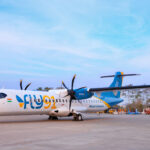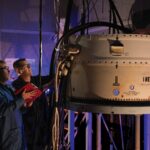Exosonic has announced the successful first flight of its EX-3M “Trident” high-speed, developmental unmanned aerial system (UAS) test aircraft. This test took place out on a dry lake bed in Southern California and reached a top speed of over 130 knots at an altitude of roughly 600 ft AGL.
This represents a significant milestone in Exosonic’s company history as it proves that the company can translate its supersonic aircraft engineering design techniques into an airworthy aircraft. Even though the aircraft is a subscale version of the supersonic UAV, Exosonic went through several of the integration and flight test challenges that would come from a larger aircraft program.
Exosonic now joins a small group of supersonic / hypersonic aircraft start-ups that have successfully flown their own prototype vehicle designs. With minimal cost spent on the programme relative to its peers, the company demonstrated how cost-efficient it can be in producing an airworthy vehicle.
As for the Trident’s future, it will serve as subscale testbed to validate autonomy software and sensors for both commercial and government customers. Exosonic has already had conversations with other companies about incorporating sensors and software on Trident as part of their own internal or customer efforts.
The company plans to expand its scope of joint development and testing efforts. One feature that attracts customers is how open the Trident platform is to new software, payloads, or even manufacturing techniques. With a proven planform, Trident helps other customers de-risk their technologies.
“I couldn’t be prouder of our Engineering team for working through our flight test programme to achieve our company’s first flight,” said Norris Tie, Exosonic’s CEO and co-founder. “It’s amazing to see Trident fly. We are honoured to join the small group of companies who have flown a privately developed supersonic / hypersonic designed airframe.”
Exosonic Chief Technology Officer and co-founder Timothy MacDonald, PhD described the flight as “validation that our team and design methods can produce a well-behaved airplane with the type of configuration needed for supersonic flight.”
Subscribe to the FINN weekly newsletter
You may also be interested in
Air Force One to go supersonic in next decade
Kraus Hamdani Aerospace to provide solar-eVTOL UAS to US Navy

